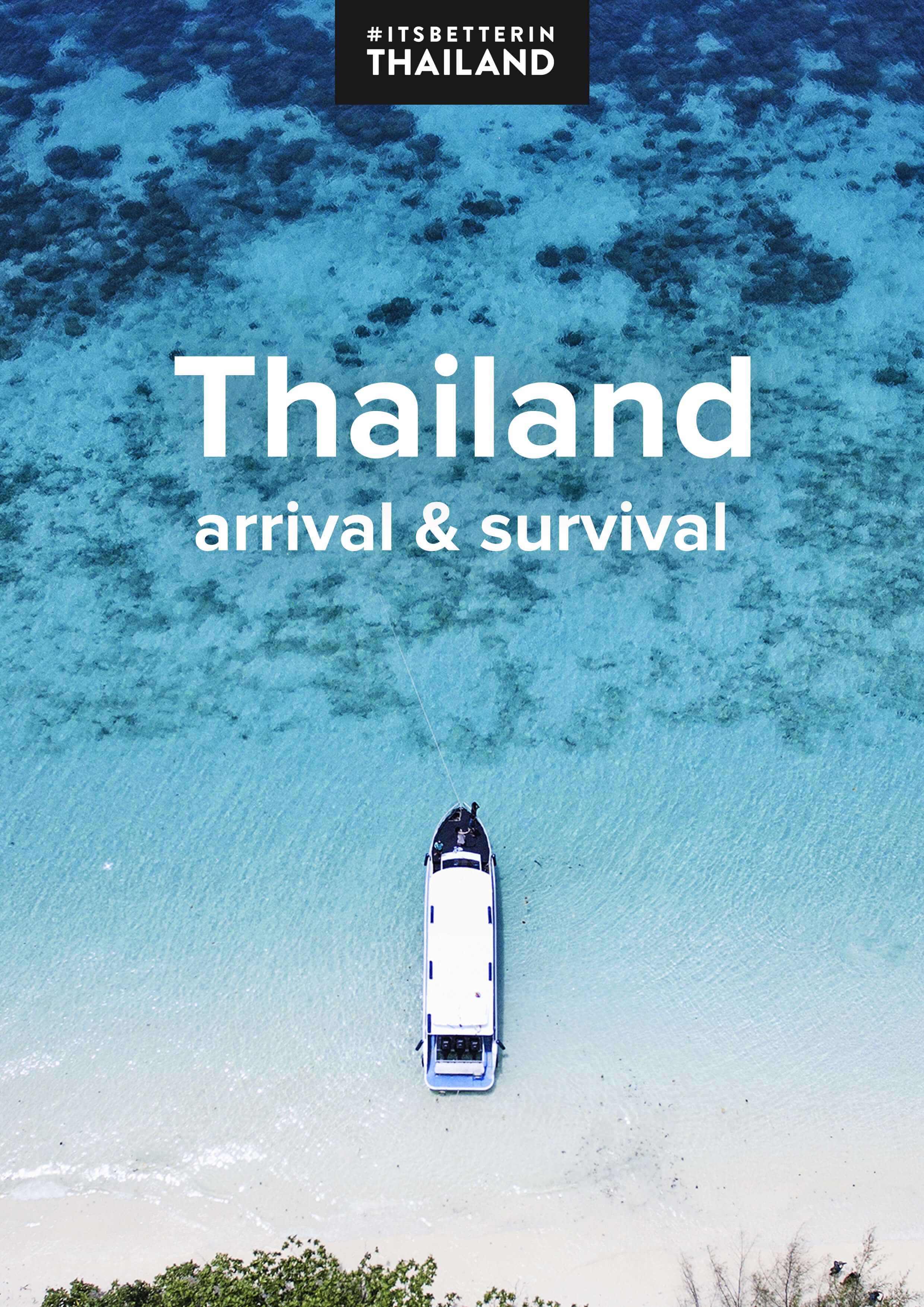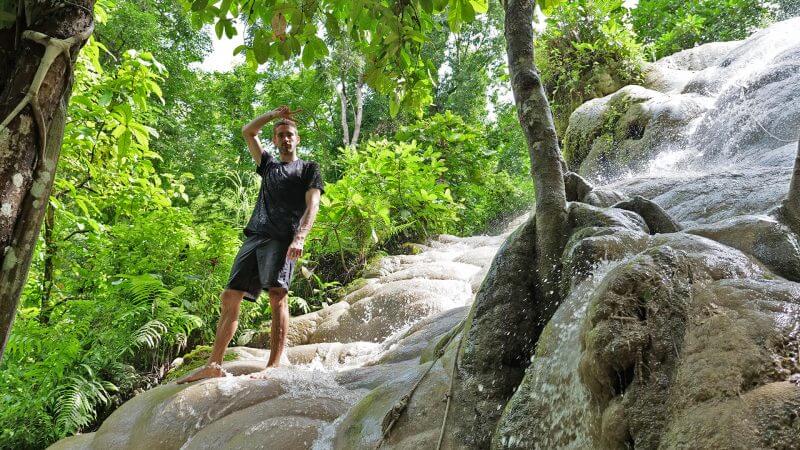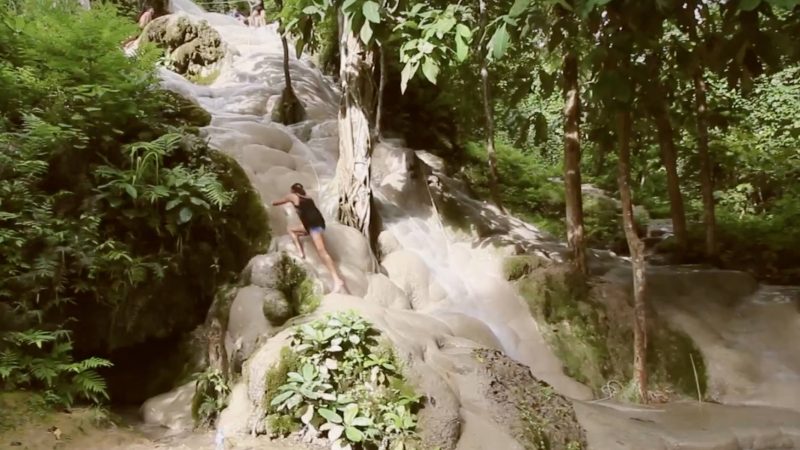Chiang Mai
On everyone's list of places to visit, Chiang Mai (เชียงใหม่) is an important cultural center, bustling city and home to hundreds of thousands looking to be closer to nature in a more relaxed environment.
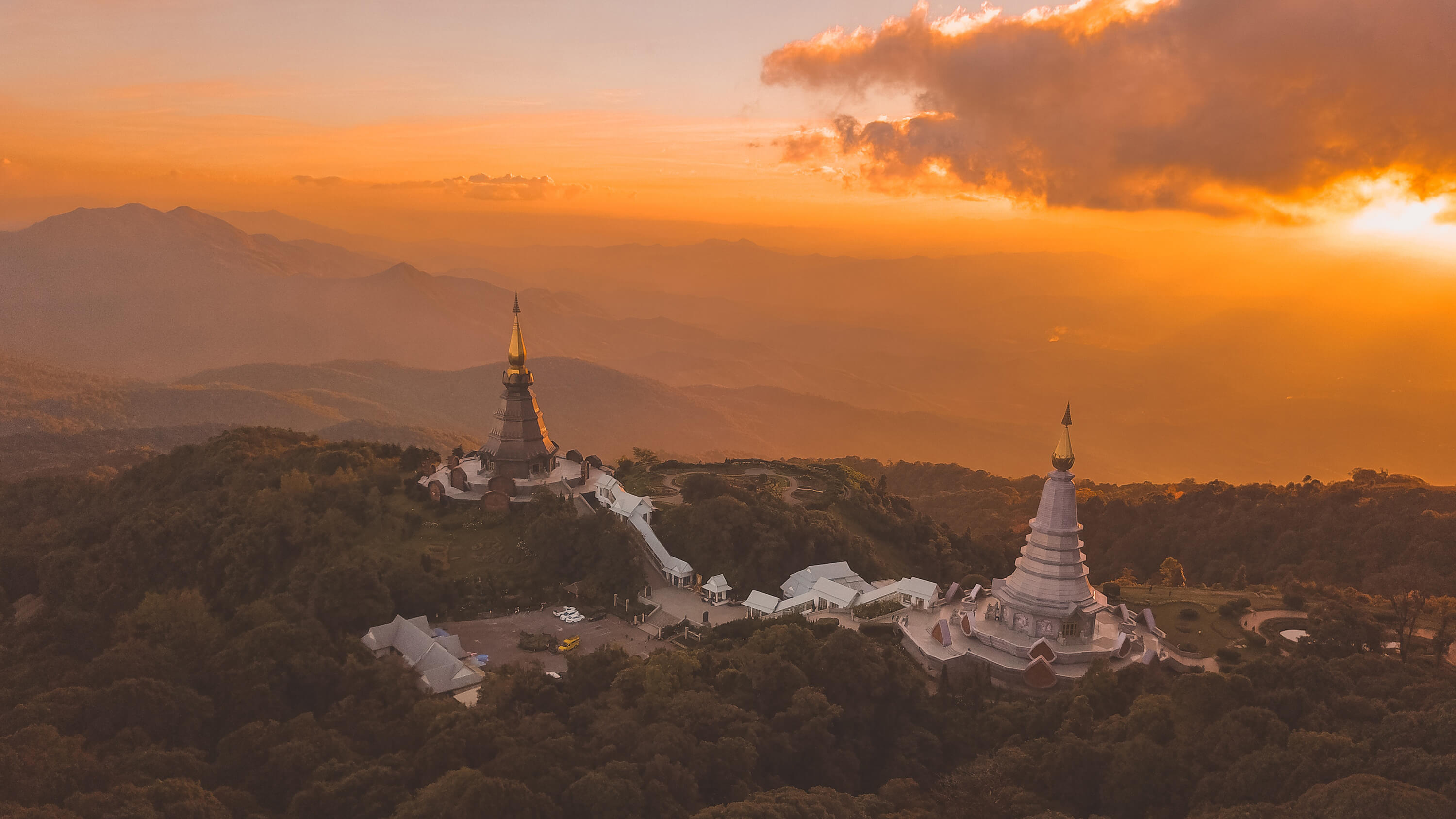
Introduction
Chiang Mai is the most important city in Northern Thailand and the hub for the region. The city dates back to the late 13th Century and was previously the capital of the Lanna Kingdom before it was occupied by the Burmese, and ultimately integrated into Siam and then modern Thailand.
Chiang Mai is a truly cosmopolitan city with a thriving music and arts scene, a vibrant cafe culture, and great nightlife. A big expat population and a few large universities drive the modernizing of this truly hip city. Travelers use Chiang Mai as a jumping off point for Northern Thailand but most stop for a few days in the city. It’s well worth the time.
Recommended for
- Anyone looking to explore Northern Thailand
- Travelers interested in regional culture, cuisine, and temples
- People who want to check out a young, hip city
Getting there
As the major transportation hub of Northern Thailand, it’s easy to get to Chiang Mai from just about anywhere in the country and a handful of cities abroad.
By bus – The cheapest way to get to Chiang Mai is by bus. Buses from Morchit Northern Bus Terminal in Bangkok make regular trips to Chiang Mai from early morning until around 10 pm. VIP buses cost 500-600 Baht (~$15-$19 USD). These are fairly comfortable sleeper buses but it’s still a long trip of around 10 hours.
Pretty much all other northern provinces will have direct buses to Chiang Mai, as will large cities in Issan such as Udon Thani.
By plane – Chiang Mai Airport (CNX) is located just 10 minutes from the center of town if there is no traffic. We recommend Google Flights for finding the cheapest fares. From Chiang Mai airport taxis operate at fixed fares to anywhere in town. Sedans good for up to three people without too much luggage are 150 Baht, and SUVs for larger groups are 200. It’s usually faster to take these than to call a Grab Taxi, and the price works out about the same. If you’re really on a budget you can walk out to the road and try to flag down a red songthaew. See our ‘getting around’ section below for more information.
Flights from Bangkok – There are frequent flights to Chiang Mai from both Bangkok airports.
Don Mueang (DMK) has most of the budget airlines (Air Asia, Thai Lion Air, Nok Air) and it’s normally cheaper to fly from here. The flight only takes an hour, so there is little difference between the cheap airlines and the more expensive ones.
Suvarnabhumi (BKK) has most of the full-service airlines, although Viet Jet is a budget airline that flies this route. If you are staying closer to BKK airport, it’s worth booking to or from there even if it’s a few hundred Baht more expensive. Otherwise, DMK is usually the better bet for Chiang Mai-Bangkok flights.
Other domestic flights – There are also flights to Chiang Mai from Hat Yai (near Malaysian border), Khon Kaen, Phuket, Krabi, Surat Thani, Koh Samui, and U-Tapao (near Pattaya and closer to Koh Chang than Bangkok).
International flights to Chiang Mai – There are flights to Chiang Mai from most major Asian cities including Singapore, Kuala Lumpur, Ho Chi Minh City, Hanoi, Macau, Hong Kong, Taipei, Luang Prabang, and a number of mainland Chinese cities.
By train – The main northern line runs from Bangkok Central Station to Chiang Mai with frequent service. You can catch the train from most stations along the way, but for express trains, you’ll likely need to catch a local train to an express stop first. Timetables can be found on the Thailand State Railway website and you can also book tickets there. The journey takes 12 hours or more and is usually delayed. We recommend this for people who enjoy rail journeys, and those who want to save a night’s accommodation but don’t want to take the bus. Second-class sleepers are good value, and we recommend spending a bit extra for a lower berth as you get a little more room and there is less rocking.
Where to stay
Chiang Mai has an insane amount of accommodation for all budget ranges. If you aren’t sure where you want to stay, use the map view on Booking.com and find a place inside the Old City, or just outside. It’s very easy to tell on the map where the Old City is since it’s a perfect square surrounded by major roads.
We find our accommodation on Booking.com by first searching for the town or province and our dates, we then filter out any rooms with a score lower than 7 or 8 (depending on availability) as well as any rooms out of our budget. After this, we open the map and hover over all of the pins in the rough location we already decided we want to stay in. Hovering over the pins gives us the price for x nights plus the review score. We click on each pin to open those hotels in a new tab, review them and book our favorite.
Getting around
Chiang Mai’s old town isn’t all that big, and a lot of places can be covered on foot. There are a lot of very nice temples scattered throughout the old city and our favorite way to see them is to accidentally stumble on them while walking in search of a restaurant, market, or just wandering aimlessly. For longer distances or to save time and not sweat so much, there are plenty of other options:
By bicycle – Lots of guesthouses rent bicycles and they’re a good way to get around the city. The roads here, like anywhere in Thailand can be a bit dangerous. Take it easy and slow, signal your turns and lane changes, and always assume drivers will do the stupidest thing they can at any given moment. Don’t expect anyone to yield to you.
By motorbike – There are motorbike rental places all over Chiang Mai and they’re the most used method of transportation for locals here. We strongly recommend only renting a motorbike if you are experienced. Chiang Mai is a busy city with fast-moving, tightly packed traffic. You can find bikes for as little as 100 Baht (~$3USD) per day. These are city commuter bikes and aren’t a good idea for longer trips out of town, especially where there will be hills. There are a lot of cool things to do within an hour of the city and a motorbike is a great way to get to them, but you’ll want to rent a decent bike which should cost between 150-250 Baht, more for bigger bikes. See our guide to renting motorbikes in Thailand for more information.
By Songthaew – A songthaew is a pickup truck with two rows of benches installed in the back. Songthaews are common all around Thailand, and they’re everywhere in Chiang Mai. These trucks are painted in different colors based on their destinations out of the city, but to get around within Chiang Mai you want to look for the red songthaews. It won’t take more than a few seconds to find one as they’re absolutely everywhere. Chiang Mai’s red songthaews don’t have fixed routes. Instead, the drivers basically go where their passengers take them. The initial passenger pretty much sets the general route, and anyone who stops the truck along the way will get a ride if they’re going in the same rough direction. If your destination isn’t along their current route, no worries, just hail the next one.
To stop a red songthaew, just hail it like you would hail a taxi. Prices start at 20 Baht per person for the shortest journeys, and should never get over 100 Baht anywhere within the city. Red songthaews can also be hired as private taxis for day trips. If you get a group of people together, this can make visiting even places far out of the city pretty economical. For example, a visit to the “Sticky Waterfall” an hour north of the city will cost between 1000 and 1500 Baht in a red songthaew.
By Grab Taxi – Grab Taxi is the Southeast Asian equivalent of Uber and it works basically the same. You’ll need to download the app, and then you just put in your destination and call a car. In Bangkok, you’ll often get a normal taxi but in Chiang Mai, you usually get a private car. You can choose to pay cash or enter in a credit card. You can also call a car, or if you’re alone and looking to save money you can get a motorbike taxi. In Chiang Mai, you can book a red songthaew via the app as well.
By car – renting your own car is a good way to get around the North and Chiang Mai is a good place to start. We recommend using Rentalcars.com to book ahead. It’s also possible to hire a private car and driver in Chiang Mai. It’s usually easiest to ask your hotel to help you book this. Alternatively, if you book a Grab Taxi for a short ride and the car is comfortable, you may be able to work something out with the driver.
What to do
Eat – Northern Thai food is excellent and Chiang Mai is a great place for it. Look for the noodle dish Khao Soi, the spicy chili dip Nam Prik Num, the pork curry Gaeng Hung Lay, and the excellent sausages Sai Oo-ah.
Chiang Mai Grand Canyon – An old quarry where the dirt for Chiang Mai’s roads was dug up became a popular cliff jumping spot, and is now a full-on inflatable water park. It’s a fun day trip with friends and is just half an hour out of Chiang Mai. There’s one area where you can just walk around and entry costs 100 Baht. If you want to use the waterpark, entrance is 550 Baht.
Visit the “sticky waterfall” – Bua Tong Waterfall, aka the Sticky Waterfall, is an hour’s drive north of Chiang Mai and is absolutely worth visiting. Dissolved mineral deposits coat the submerged rocks and tree roots in a high-traction rock surface that looks dangerous but is very easy to walk on. Check out our guide to visiting the Sticky Waterfall to find out how to visit when there’s nobody else there.
Wander through the old town – The Chiang Mai old town is full of hidden surprises that are best found by getting yourself lost. There’s no better way to enjoy a temple or a section of Old City wall near the moat than by stumbling on it completely by accident. There is also a strong mural and street art scene around Chiang Mai.
Check out the markets – The sprawling Chiang Mai Night Bazaar is pretty touristy but still a cool place to visit and do some shopping. Besides all the usual tourist crap, there are actually some very nice things to be found here, especially in jewelry and apparel designed and produced around Northern Thailand. There are also plenty of places to eat and drink. The Sunday Night Market on Rachadamnoen Avenue in the Old Town near Tha Pae Gate is pretty good as well, but it can get pretty crowded.
Nightlife
Chiang Mai is a huge university town and thus it has a huge variety of bar and nightlife options. Unfortunately, local authorities are fairly strict with enforcing the midnight closing time meaning the party stops early in Chiang Mai. There are a few places where the party goes late, but they’re usually a bit of a shitshow.
Within the old city, most people head to Zoe in Yellow, a small area with a bunch of different bars inside. Zoe gets a mix of backpackers, some local Thais and expats, a few uni students, and usually some prostitutes working the freelance game looking for foreigners. It’s usually a pretty good time here, but it can get old quickly. Zoe is a short walk from a few late-night bars. If you follow the crowds out after closing time, you’ll end up at Spicy, a late-night club full of drunk backpackers, and freelance working girls. Spicy can be a fun time if you’re already in the party mood and there with a good group of friends.
The Nimmanhaemin area is Chiang Mai’s most popular neighborhood. It’s full of bars, restaurants, and coffee shops and is popular with the city’s hi-so crowd, university students, expats, and the booming digital nomad scene. The most popular nightclub here is Warm Up Cafe, a club with different areas indoors and out, each with different music ranging from DJs to live bands.
Fitness & gym
Chiang Mai has everything you could want for fitness including Muay Thai training, yoga studios, crossfit gyms, modern gyms with aircon, and all the exercise classes you could want. Most of the gyms around town also offer day passes from between 70 and 100 Baht, so just type in ‘gym’ to Google maps and find whatever is closest to you.
Getting out
From Chiang Mai, you can jump off to just about anywhere. It’s the gateway to Northern Thailand so we recommend a visit to one of the jewels of the North:
Pai – Head up to the hippy town of Pai in Mae Hong Son, a beautiful valley of terraced rice fields and windy mountain roads. Minibusses go regularly, but if you’re an experienced motorbike rider, the Mae Hong Son Loop is Thailand’s most famous motorbike route and passes through Pai.
Chiang Rai – If you enjoyed Chiang Mai but found it too touristy, check out Chiang Rai, another charming northern Thai city in a province full of stunning mountains.
Sukhothai – The 12th-Century Kingdom of Sukhothai is considered the original Kingdom of Siam and the ruins there are very impressive. History lovers should check this place out.
When to go
Most of Thailand falls in to the generic high and low season categories, including Chiang Mai.
High season - begins in November and runs through to February, bringing cooler temperatures, lush greenery from the previous months of rain, good air quality, and less rain. The downside is larger crowds and sometimes higher prices for tours, flights and accomodation.
Low season - begins in July and runs through to October. During low season the temperatures are higher, the chance of rain and storms are higher. That doesn't mean it's a bad time to visit though, if you can be flexible, there are deals to be found on flights and accomodation.
Destinations like Chiang Mai in both northern and north eastern regions can be significantly cooler during the high/cool season than central and southern provinces like Bangkok or Phuket. It's a welcome and noticable change in season which may require a wardrobe change, especially at night.
As Chiang Mai is in the northern/north eastern region, it's important you consider the smokey/burning season which affects the north, north east and sometimes central/eastern provinces. You can find more information for current and historical air quality on aqicn.org.
Need more? Read our post discussing the best time to visit Thailand.
Where to stay
Instead of recommending hotels, we think it will be more useful to share our process so you can pick based on your own critera for location, budget and style.
We always start our search on either Booking.com or Agoda. They have an easy to user interface and have some extra benefits for "Genius" and "VIP" users. You can also sometimes pay with credit card in advance if you're playing the cashback or air miles game.
Process:
- Search for specific province, city or town.
- Apply rating filters for a minimum rating or either 7, 8 or 9.
- Apply other filters: budget, fitness, breakfast, etc.
- If you have a specific location in mind, use map view to browse and make a final selection.
If there are too many properties available to choose from, increase the rating filter for less, higher rated selections.
Final notes: Prices are dynamic. Check the same hotel on both Booking.com and Agoda to see which has the best deal at any given time (go through to checkout to make sure all VAT and service charges are factored in). You can go one step further by calling the hotel and checking the price for booking directly. In our experience this saves money 50% of the time but you have less guarantees.
Emergency contacts
Knowing an emergency number could save your own, or somebody elses life. Take a photo or save these numbers on your phone:
Police & emergencies - 191
The most important number to remember. If the operator is unable to speak English, call 1155 (below).
Tourist Police - 1155 or (+66) 2308-0333
This hotline is available 24 hours a day and they will all speak English. This is an important phone number to remember - They will help you out with any concerns or questions you have and can redirect you to the correct number you may need.
Public Ambulance - 1669
Dialing this number will connect you to a public ambulance service, which will dispatch a vehicle to your location. The average response time for urban areas is around 10 minutes, but may take up to 30 minutes in rural areas. English-speaking staff should be available to assist you.
Fire Department - 199
In case of an emergency such as a house fire, or forest fire, call 199 for the Fire Department to be dispatched to your location.
Highway Police - 1193
If you plan on driving in Thailand, then you may end up needing to use this number if you break down in an unsafe place etc.
Posts
Our archive of posts from Chiang Mai
Videos
Our archive of videos from Chiang Mai

Adorable hedgehog cafe in Chiang Mai
Sip on a nice coffee and play with cute hedgehogs and guinea pigs at this…
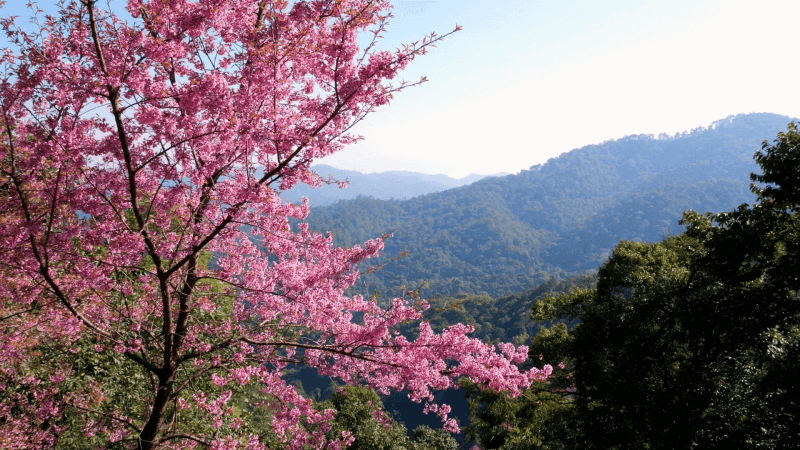
Wild Himalayan Cherry Trees Blooming in Northern Thailand
Wild Himalayan Cherry Trees blossom in January and February across Northern Thailand and it's a…
Activities
Our archive of activities and things to do in Chiang Mai

Doi Suthep: Full guide to Chiang Mai’s best day trip [2025]
A microcosm of most of the best parts of Northern Thailand, all accessible in a…
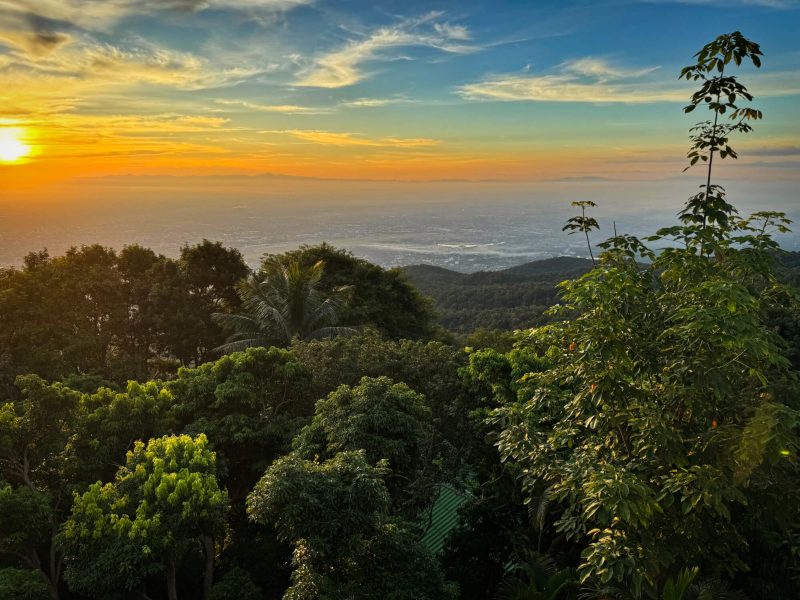
Hiking the “Monk’s Trail” to Wat Pha Lat & Wat Phra That Doi Suthep
The Monk’s Trail is a very accessible hike in Chiang Mai. The starting point is…
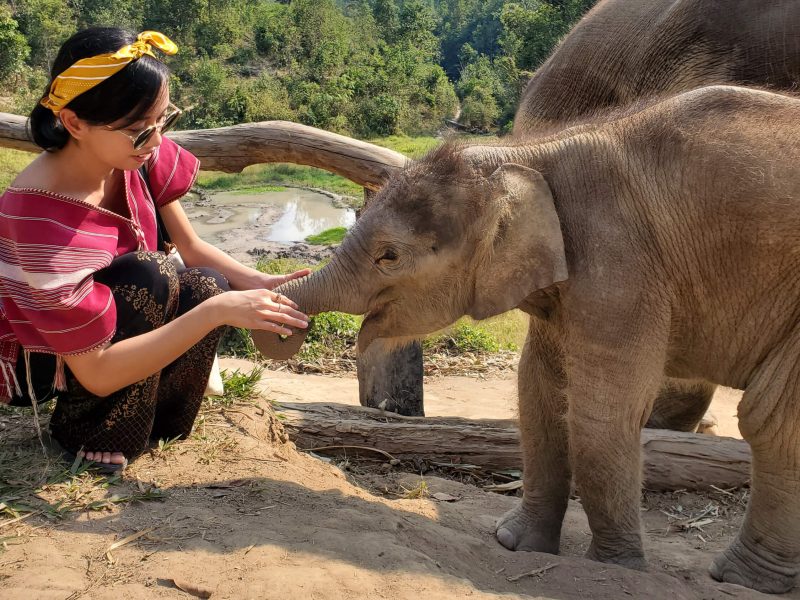
How to book an ethical elephant sanctuary in Thailand
It can seem almost impossible at first to find out which “elephant sanctuaries” in Thailand…
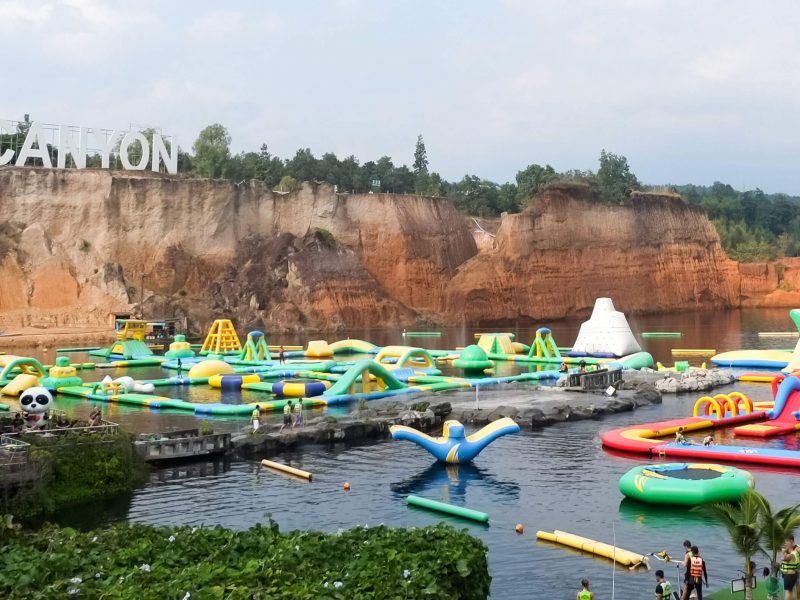
The Grand Canyon Chiang Mai Waterpark
The most unique waterpark we've ever been to, and an insanely fun way to stay…

Visiting Bua Tong Sticky Waterfall in Chiang Mai
This unique waterfall near Chiang Mai has high-traction rock surfaces that are fun to play…
